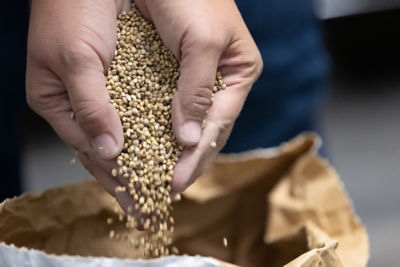Causal Agent
Cucumber mosaic virus (CMV)
Several strains have been reported.
Distribution
Worldwide
Symptoms
Symptoms of this disease vary greatly, depending on the virus strains involved. Often, the virus causes stunting of the plant, giving it a bushy appearance. Leaf symptoms may vary from a mild, green mottling to a chlorosis or severe necrosis, or a severe “shoestring” symptom in which the leaf blades are greatly reduced with only the central rib of the leaflet remaining. Shoestring symptoms are similar to the severe symptoms observed with ToMV infection. However, with the shoestring symptoms, the blade of the leaflet is usually more suppressed. Fruit are reduced in size and often misshapen.
 Leaflets with severe “shoestring” appearance. (Courtesy of Ed Sikora, Auburn University, Bugwood.org)
Leaflets with severe “shoestring” appearance. (Courtesy of Ed Sikora, Auburn University, Bugwood.org)
Conditions for Development
This virus has a wide host range (800 species) from which it can be acquired by aphids and transmitted in a non-persistent manner. CMV is mainly a problem where infected alternative hosts survive year round as well as in greenhouses. where once introduced it can readily be spread from plant to plant by aphids. CMV can also be mechanically transmitted. However, because it is an unstable virus, the chances of transmission by greenhouse workers and their tools is much less than with a virus like Tomato mosaic virus (foMV).
Control
In greenhouse crops, controlling the aphids can greatly help reduce the incidence of this disease. The elimination of weeds and ornamental plants that harbor the virus, as well as roguing of infected plants, can help reduce the spread of this virus and disease incidence.



